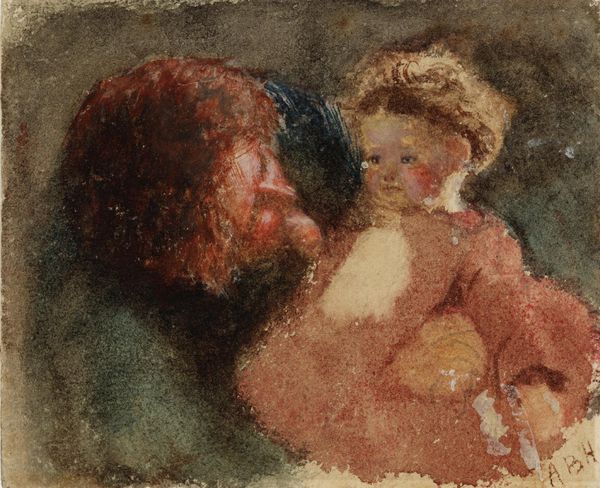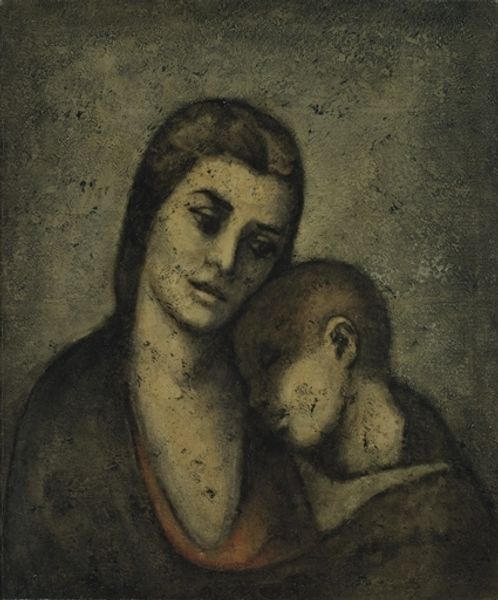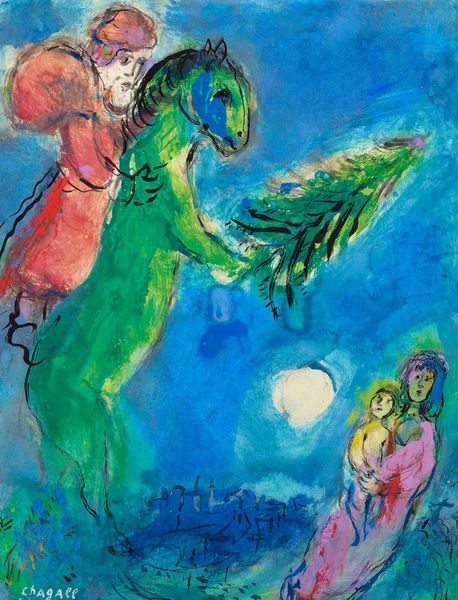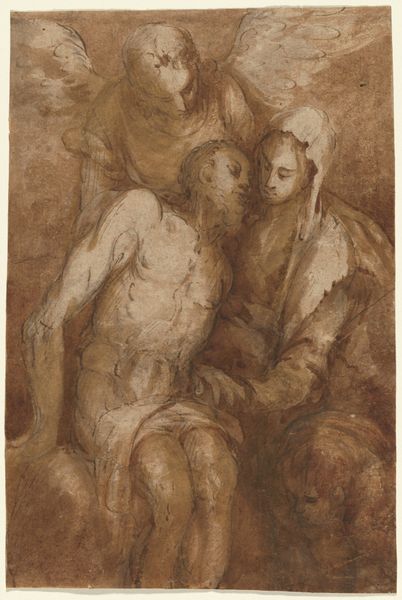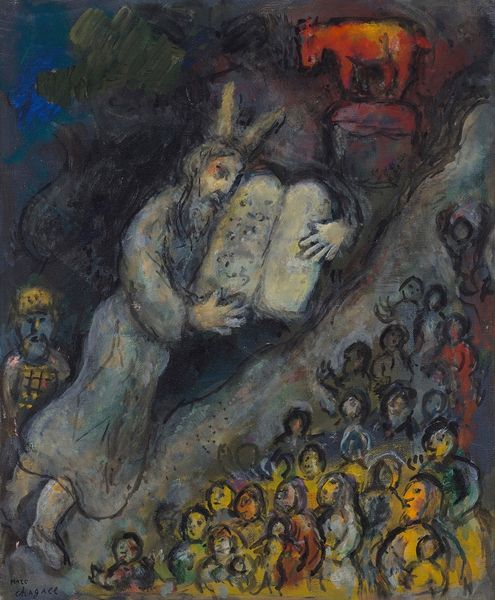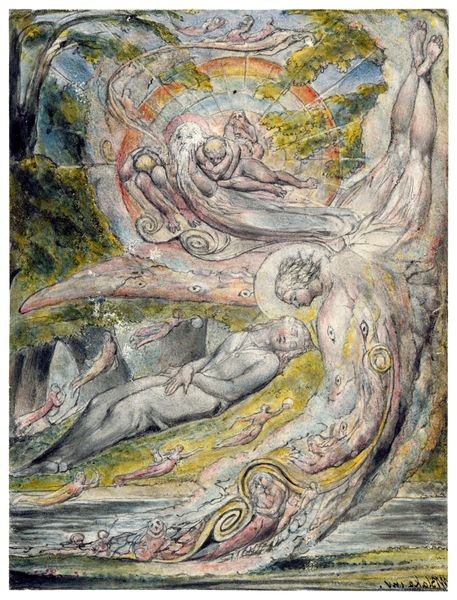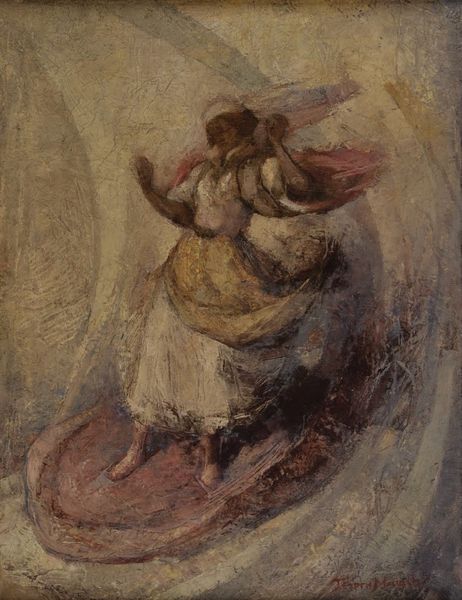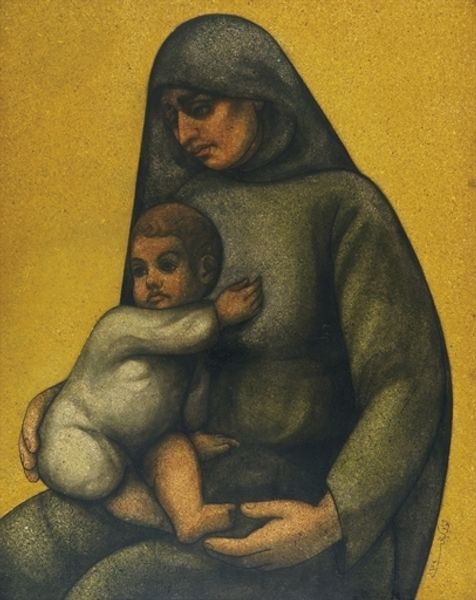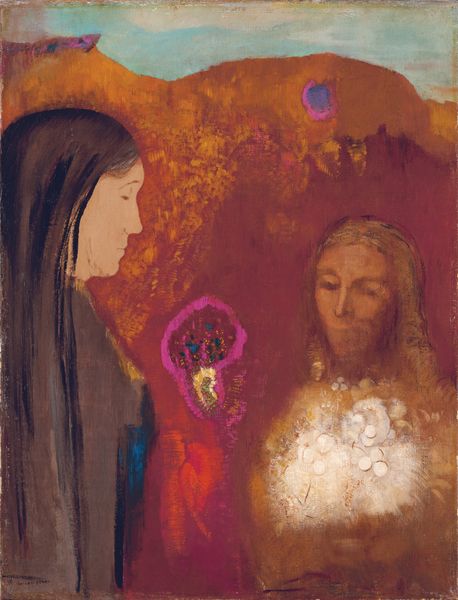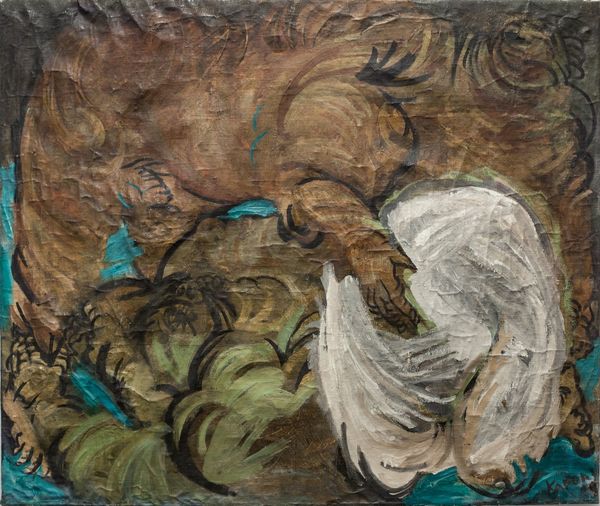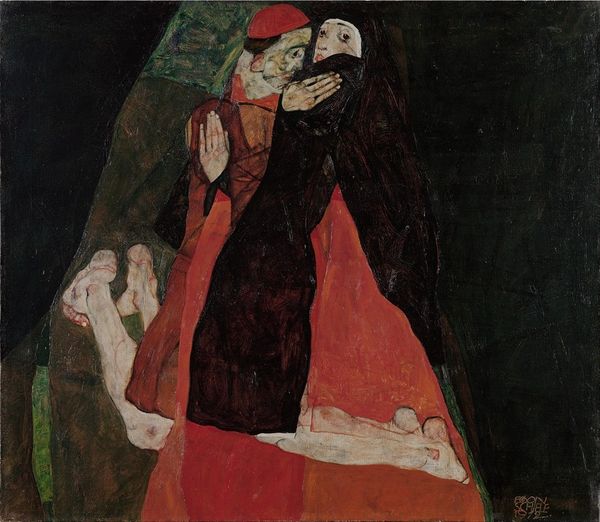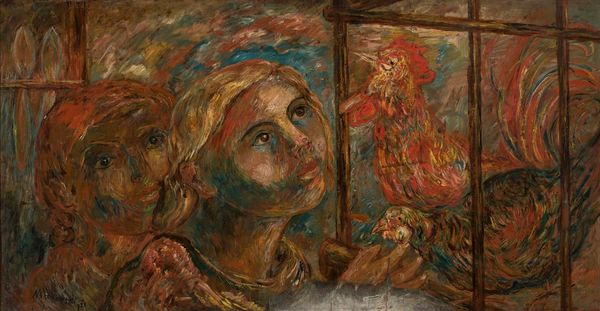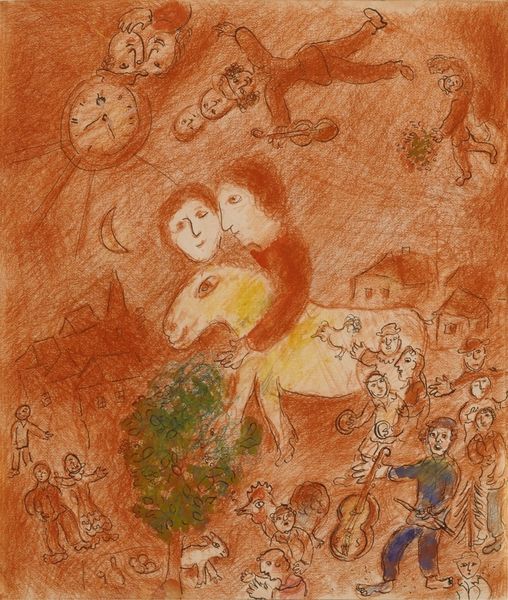
Copyright: Modern Artists: Artvee
Editor: Here we have Marc Chagall’s "Moïse et sa famille," or "Moses and his Family," from around 1959. It looks like a drawing, probably charcoal and ink, with touches of oil paint? The mood feels somber, even burdened. What’s your read on this work? Curator: Considering Chagall’s background as a Jewish artist navigating 20th-century Europe, especially post-Holocaust, I see this as a powerful reflection on displacement and survival. The image of Moses, a leader of his people, holding his family, evokes themes of protection, faith, and the continuation of cultural identity in the face of adversity. Editor: The colors are also really muted. Curator: Yes, that palette contributes to the sense of vulnerability and perhaps even mourning. Do you see how Moses isn’t presented heroically, but with a weary tenderness? He embodies the weight of responsibility. Think about how this intimate, almost fragile portrayal contrasts with traditional depictions of Moses. Editor: That makes me think about contemporary refugee narratives. It's less about triumphant leaders and more about everyday people seeking safety. Is that a fair connection? Curator: Absolutely. Chagall’s work transcends its specific biblical context to speak to universal human experiences of migration, trauma, and hope. Consider how the intimate family portrait reframes the grand narrative of the Exodus within a deeply personal and affecting register. The act of bearing witness through art becomes paramount. Editor: I’m struck by how relevant a work from 1959 can still feel today. It’s a powerful reminder of the ongoing struggles faced by displaced communities around the world. Curator: Indeed. Chagall invites us to see beyond the surface narrative and grapple with the deeper socio-political implications of forced migration and the resilience of the human spirit. Art serves as a poignant mirror reflecting our shared humanity.
Comments
No comments
Be the first to comment and join the conversation on the ultimate creative platform.
